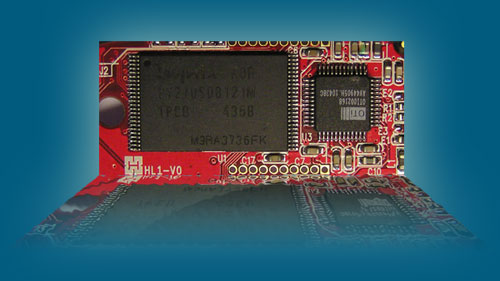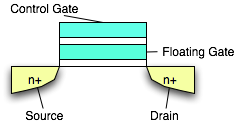Posts Tagged ‘NAND’
Gadget Shopping: Largest USB Flash Drive You Can / Should Buy (Charts)
Flash drives are an excellent example of the geometric progression of technology. They are also an excellent example of price increasing geometrically vs. capacity. Some models of USB flash drive have dropped in value to the point of impulse purchase, but how much storage should you spend your money on?
The following charts are based on a comparison of 30 USB flash drives
How Does NAND Flash Memory Work?
Posted by: Jordan in Makes Sense on January 30th, 2009

NAND Flash Memory (left), Microcontroller (right).
How many times have you been caught off guard by what should be a relatively simple question? “My new flash drive has an insane capacity! How does NAND work anyways?”, I was asked by a friend yesterday. So I blacked out and when I came to I remembered ending my reply with “and ya, I think something like that”. No, it wasn’t that bad but clearly I needed to brush up on the old NAND-cabulary.
How NAND flash Works
On a NAND chip each bit (0 or 1, on or off) is stored physically by a specially designed transistor called a floating gate. The floating gate is electrically isolated from all other components by a layer of oxide. Electrically isolating the floating gate gives NAND flash the most important property that we know and love: data retention without power! (This is also known as non-volatile storage because voltage isn’t required for the memory to maintain its state.)
 When the state of the floating gate needs to be changed it’s time for some physics. Fowler-Nordeim tunneling is the name of the black box of physics that creates an electrical tunnel from a control gate to the floating gate. Via this tunnel the contents of the floating gate (0 or 1) can be read and altered. In your USB drive, Solid State Drive, iPod, or whatever all this work of reading and writing is handled by a separate microcontroller.
When the state of the floating gate needs to be changed it’s time for some physics. Fowler-Nordeim tunneling is the name of the black box of physics that creates an electrical tunnel from a control gate to the floating gate. Via this tunnel the contents of the floating gate (0 or 1) can be read and altered. In your USB drive, Solid State Drive, iPod, or whatever all this work of reading and writing is handled by a separate microcontroller.
What Does NAND Mean?
NAND is not an abbreviation or an acronym. It’s a portmanteau created by combining the word “NOT” with “AND”.
N(OT) + AND = NAND
If you’re thinking this looks like a boolean test you’re right. The result of a NAND test is always true unless both inputs are true.